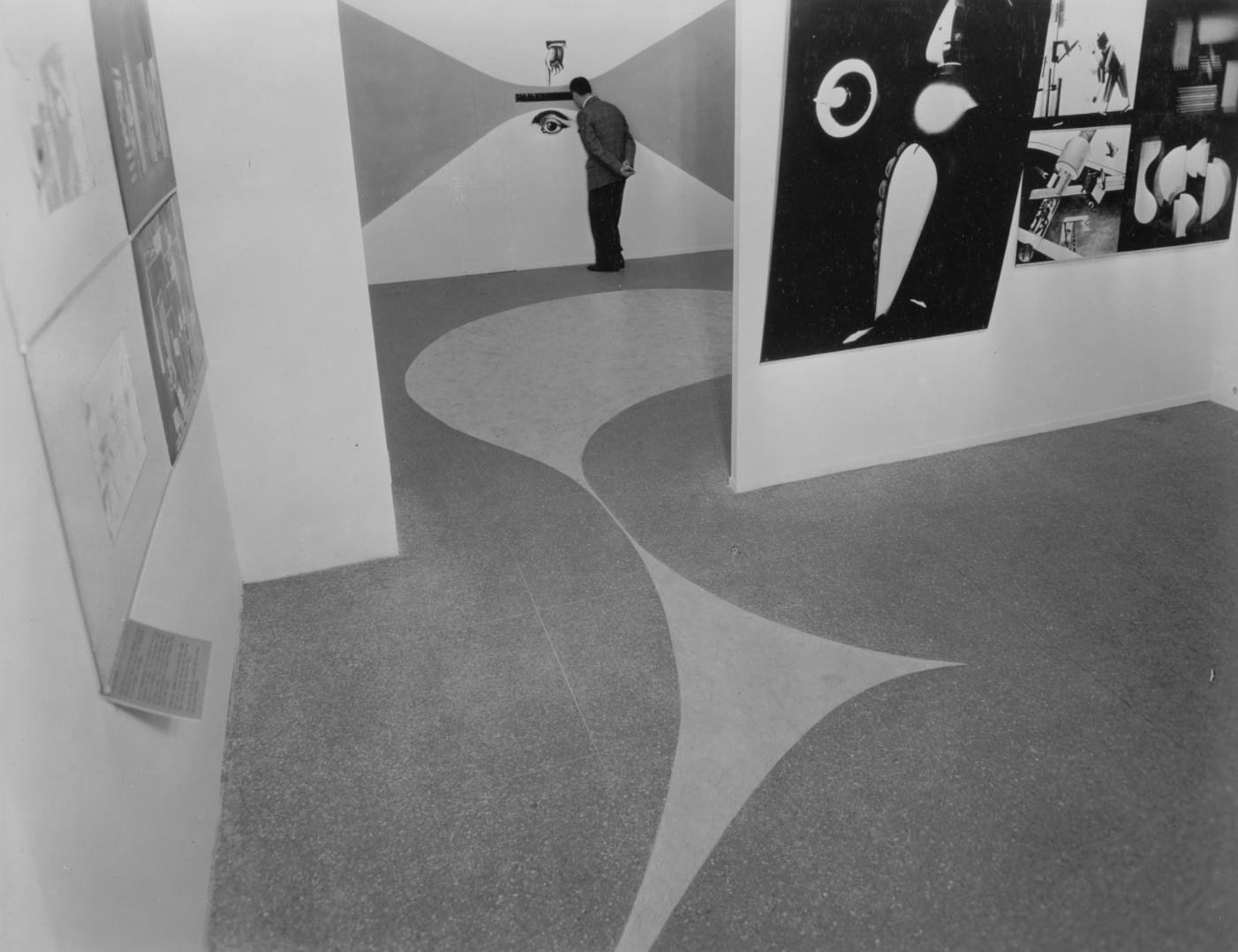![]()
Bauhaus: 1919–1928
Stagecraft at the Bauhaus. Herbert Bayer is looking through the peephole at revolving figures wearing costumes from the 'Triadic Ballet,'" at the exhibition, "Bauhaus: 1919-1928.
In 1938 MoMA issued a press memo informing New York City editors that on December 7, the Museum would open “what will probably be considered its most unusual exhibition—and certainly one of its largest.” That exhibition was Bauhaus: 1919–1928, an expansive survey dedicated to this incomparably influential German school of art and design. On display were nearly 700 examples of the school’s output, including works of textile, glass, wood, canvas, metal, and paper. It was a celebration of the remarkable creativity and productivity of the Bauhaus, which had been forced to close under pressure from the Nazi Party just five years prior. The size and scope of this tribute indicated the importance of the Bauhaus to MoMA's development: the school had served as a model for the Museum’s multi-departmental structure, and inspired its multidisciplinary presentation of photography, architecture, painting, graphic design, and theater.
on March 13th, 2019

